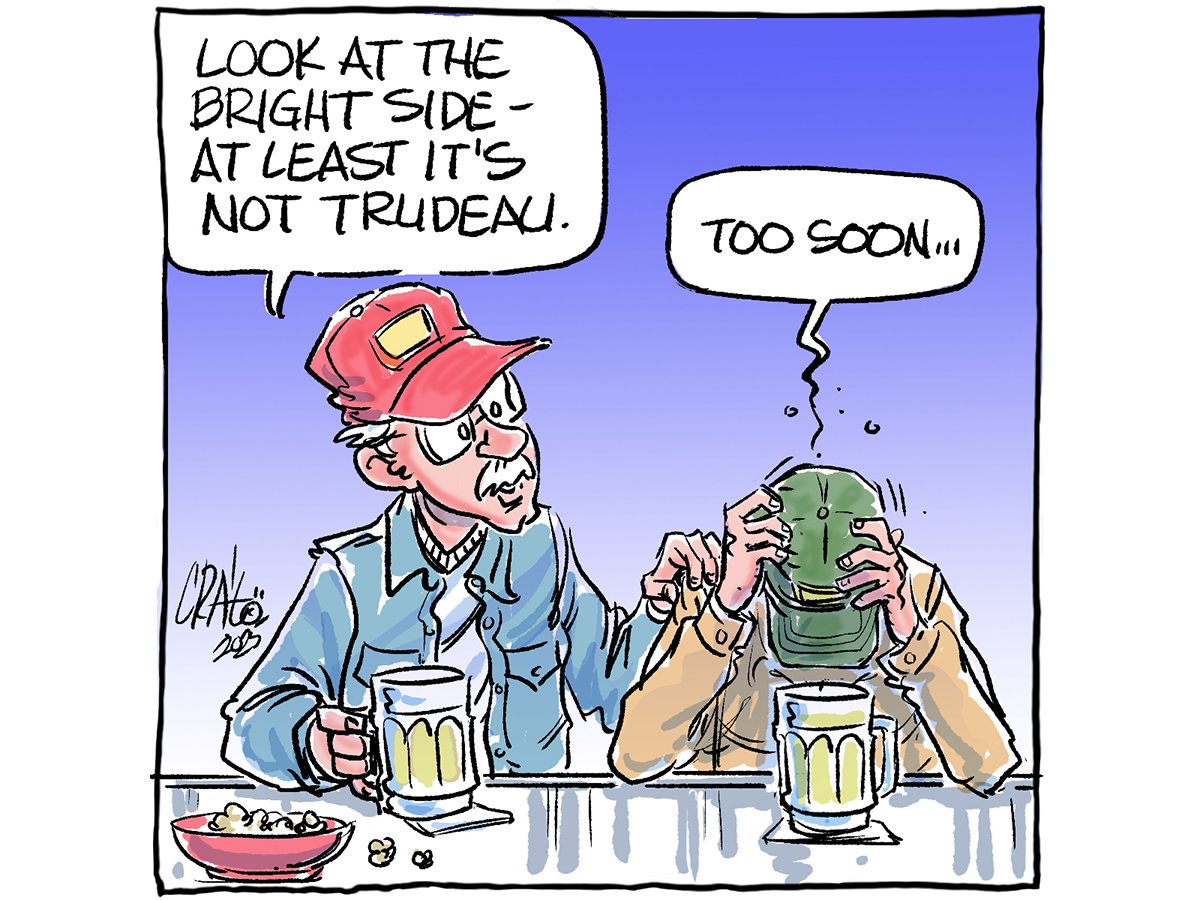Policy reform seen as top post-election priority

REGINA — Prime minister Mark Carney will name his cabinet May 12, and the Canadian Agri-Food Policy Institute has some advice for the incoming agriculture minister.
Kody Blois from the Nova Scotia riding of Kings-Hants served briefly after Carney replaced Justin Trudeau and is a strong candidate to continue.
Follow all our Federal Election 2025 coverage here
Read Also


Ag sector must stay vigilant as Liberals remain in power
It’s hard to know how different Mark Carney will govern, but there are some early encouraging signs.
However, in a “transition binder” published after the April 28 election, several of CAPI’s distinguished fellows and others analyzed some of the complex issues that face the sector and what whoever is the next minister could do about them.
Topping the list is business risk management reform.
The current Sustainable Canadian Agriculture Partnership is in place until March 31, 2028, but the official review begins this summer.
Elise Bigley, CAPI’s director of strategic projects, said the negotiations between Ottawa and the provinces is a marathon of hard work, and now is the time to give negotiating teams their mandates for real change.
She said effective tools are critical at this time of growing pressure from U.S. tariffs and a changing trade landscape as well as price volatility and extreme weather.
She said the cost of the current BRM programs will be a key issue.
“While many farmers will criticize the lack of support, the reality is that the cost of the current suite has escalated quickly,” she wrote.
“The cost of the suite increased by 50 per cent between 2018-29 and 2022-23.”
Those costs rise even as farmers say major programs such as AgriStability don’t work. Bigley said new approaches have to be considered.
She suggested a pilot program in which farmers could opt in to subsidized premiums for livestock price insurance (LPI) and non-government risk management programs instead of the existing BRM suite.
The Canadian Cattle Association has asked for cost-shared premiums for LPI to make it similar to crop insurance.
The results of that pilot could then factor into the discussions.
Bigley identified three key challenges as governments consider changes.
One is the notion that a one-size-fits-all approach works given the diversity of farms across Canada. This is the case with AgriStability, she pointed out. Similarly, AgriInvest offers support without much regulatory burden but doesn’t really provide meaningful support, she added.
The second is that it’s not clear what the programs are supposed to do.
“Since the AgriStability trigger payment was reduced in 2012, it is effectively a disaster assistance program, but one that is complicated and slow to pay out,” Bigley said.
“AgriInvest serves little risk management purpose. Crop insurance covers legitimate production risk but can subsidize premiums for coverage beyond what is covered in the other risk management programs.”
This worked in the past but now leaves many exposed to significant risk without an effective management tool, she said.
A third challenge is that provinces have stepped in to fill gaps because the current approach isn’t working.
“If the national approach is already being disrupted by a series of provincial-only programs, there is a question that must be asked about the utility of the federal government taking a rigid approach to national programs,” she said.
Before the election, Blois had announced proposed changes to AgriStability that the provinces haven’t yet approved. These were to bump the compensation rate from 80 to 90 per cent and to increase the payment cap from $3 million to $6 million to better reflect today’s operations.
These and possibly other changes could be approved at the federal-provincial-territorial ministers’ (FPT) meeting in Winnipeg in July, if not sooner.
Bigley called for a more transparent dialogue around whether investments in domestic value-added, trade diversification and innovation would help farmers better manage risk.
The agricultural policy framework hasn’t changed much in 25 years, but a new government, along with the start of FPT negotiations, means the time for change is now, she said.
Elisabeta Lika, CAPI research associate, said a comprehensive review of agricultural spending must be done before any decisions about program funding or design.
The new government will examine spending, and CAPI reported in an earlier paper that it should take a targeted approach to cuts by examining which programs serve the public and whether government involvement is necessary.
She said a structured review could provide long-term stability rather than subject the sector to abrupt cuts.
The CAPI binder also examined supply management, trade and land access and cost.
CAPI board chair Rory McAlpine advocated for regulatory modernization. He said Canada “has drifted into a pattern of regulatory accumulation.”
“Episodic attempts to ‘clean house’ are handed off to regulators and their legal advisers, who inevitably revert to the comfort of ‘steady as she goes,’ ” he wrote.
As a result, Canada is now 35th out of 38 Organization for Economic Co-operation and Development countries in regulatory burden.
McAlpine suggested Canada establish the equivalent of the U.S. Office of Management and Budget, embed cabinet directives on regulation into legislation and give treasury board ministers real oversight powers. He said including cross-agency regulatory road maps for major agri-food supply chains and regulatory modernization into the next policy framework would help.
He also said government should return oversight of the Canadian Food Inspection Agency to the agriculture minister.
Source: producer.com


